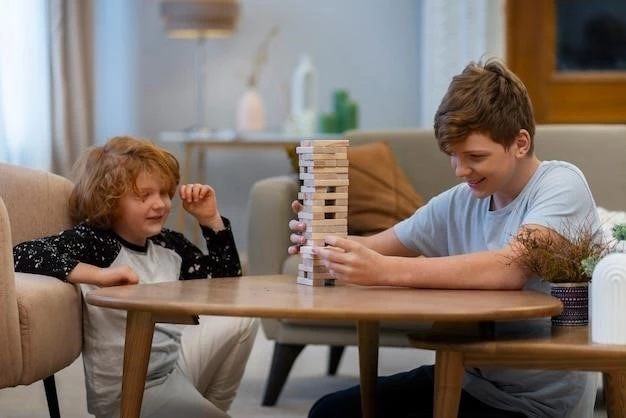Understanding Alternating Hemiplegia of Childhood
When exploring Alternating Hemiplegia of Childhood, it’s crucial to grasp the causes behind this condition. Understanding the factors triggering AHHC can offer insights into managing the disorder effectively. Stay informed and proactive in learning about the causes.
Causes of Alternating Hemiplegia of Childhood
Understanding the causes of Alternating Hemiplegia of Childhood (AHC) can aid in managing the condition effectively. AHC is a rare neurological disorder caused by mutations in specific genes, such as ATP1A3. These genetic mutations disrupt the normal functioning of sodium-potassium pumps in the brain, leading to episodes of paralysis that alternate sides of the body. While the exact mechanisms are not fully understood, research suggests that these mutations affect ion transport and neural signaling, resulting in the characteristic symptoms of AHC. It is crucial for individuals and families affected by AHC to work closely with healthcare professionals to monitor the condition and explore personalized treatment approaches. By staying informed about the genetic origins of AHC, individuals can better navigate the challenges associated with this complex neurological disorder.
Symptoms and Diagnosis of Alternating Hemiplegia of Childhood
Recognizing the Symptoms and Diagnosing Alternating Hemiplegia of Childhood (AHC) is crucial for timely intervention. AHC presents with sudden episodes of paralysis that affect one side of the body or both sides alternately. Other symptoms include dystonia, movement disorders, seizures, and developmental delays. Diagnosing AHC involves a thorough clinical evaluation, genetic testing to identify mutations in the ATP1A3 gene, and ruling out other possible causes of similar symptoms. Early diagnosis is key to initiating appropriate treatment and support strategies. Families should maintain open communication with healthcare providers to monitor symptoms and address any concerns promptly. By understanding the distinctive symptoms of AHC and seeking specialized care, individuals can optimize their management of this challenging neurological condition.
Treatment Options for Alternating Hemiplegia of Childhood
Exploring Treatment Options for Alternating Hemiplegia of Childhood (AHC) is vital for improving quality of life. As AHC is a complex and rare disorder, treatment focuses on symptom management and supportive care. Medications like flunarizine, topiramate, and benzodiazepines may help control symptoms such as paralysis and seizures. Physical therapy, occupational therapy, and speech therapy can support mobility and communication skills. Additionally, establishing a multidisciplinary healthcare team, including neurologists, geneticists, and therapists, is essential for comprehensive care. Families should collaborate with healthcare providers to create a personalized treatment plan tailored to the individual’s needs. By staying proactive and exploring various therapeutic approaches, individuals with AHC can enhance their overall well-being and functional abilities.
Research Advances in Alternating Hemiplegia of Childhood
Staying Informed about Research Advances in Alternating Hemiplegia of Childhood (AHC) is crucial for understanding evolving treatment options. Ongoing studies are focused on identifying new genetic mutations related to AHC, exploring potential gene therapies, and investigating novel drug interventions. Collaborating with research institutions and advocacy groups can provide access to the latest clinical trials and advancements in AHC management. It is essential for individuals and families affected by AHC to participate in research initiatives to contribute to the collective understanding of this rare condition. By keeping abreast of research developments and engaging with the scientific community, individuals can play a proactive role in shaping the future of AHC treatment and care.
Coping Strategies for Families of Children with Alternating Hemiplegia
Developing Coping Strategies is essential for families navigating the challenges of Alternating Hemiplegia of Childhood (AHC). It’s important for parents and caregivers to prioritize self-care, seek support from other families facing similar situations, and educate themselves about AHC. Creating a strong support network, including healthcare professionals, therapists, and community resources, can help alleviate stress and provide valuable guidance. Setting realistic expectations, celebrating small victories, and fostering open communication within the family can strengthen resilience and emotional well-being. Families should also explore counseling and mental health services to address any feelings of anxiety or distress. By proactively implementing coping strategies, families can enhance their ability to care for a child with AHC and promote a positive family dynamic.
Lifestyle Management for Alternating Hemiplegia of Childhood

Adopting Lifestyle Management strategies can significantly impact the well-being of individuals living with Alternating Hemiplegia of Childhood (AHC). Prioritize a healthy and balanced diet to support overall health and neurological function. Regular physical activity tailored to individual abilities can enhance mobility and muscle strength. Adequate rest and sleep are essential for managing fatigue and promoting recovery. Incorporating stress-reducing activities such as mindfulness, yoga, or hobbies can help reduce anxiety and improve coping mechanisms. Additionally, creating a structured daily routine and utilizing adaptive devices can enhance independence and quality of life. By embracing a holistic approach to lifestyle management, individuals with AHC can optimize their health and well-being while managing the challenges associated with this condition.
Prognosis and Long-Term Outlook for Alternating Hemiplegia of Childhood
Understanding the Prognosis and Long-Term Outlook for Alternating Hemiplegia of Childhood (AHC) is crucial for individuals and families planning for the future. The prognosis for AHC varies widely depending on the severity of symptoms and individual response to treatment. While AHC is a lifelong condition, early diagnosis and comprehensive care can improve quality of life and functional abilities. Long-term outlooks may involve ongoing symptom management, therapy, and regular monitoring. It is essential for families to work closely with healthcare providers to establish a proactive treatment plan and address any emerging challenges promptly. Engaging with support networks and accessing resources for specialized care can positively impact the long-term outlook for individuals with AHC. By staying informed and remaining resilient, individuals can navigate the complexities of AHC with optimism and determination.
Support Resources for Individuals with Alternating Hemiplegia of Childhood
Accessing Support Resources is essential for individuals navigating the challenges of Alternating Hemiplegia of Childhood (AHC). Seek out specialized medical centers and neurologists familiar with AHC for expert care. Joining support groups and online communities can provide valuable emotional support and shared experiences. Educational resources from reputable organizations like the Alternating Hemiplegia of Childhood Foundation can offer valuable information and advocacy. Utilize therapy services, such as physical therapy and speech therapy, to enhance mobility and communication skills. Additionally, consider seeking counseling or mental health support to address emotional well-being. By tapping into a network of support resources, individuals with AHC can feel empowered, informed, and better equipped to manage the complexities of their condition;
